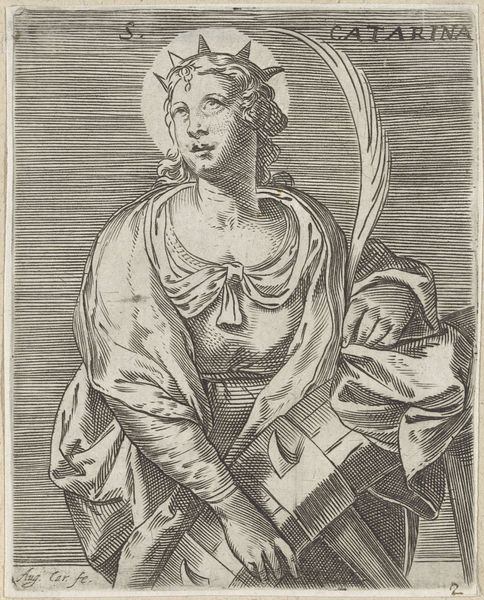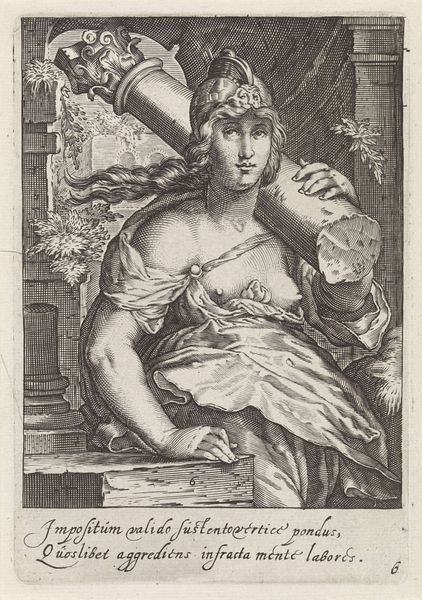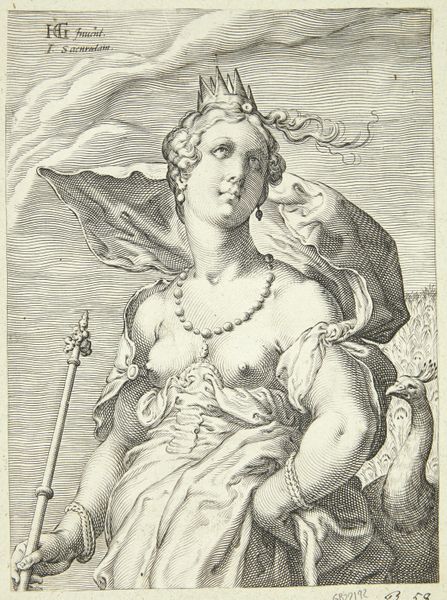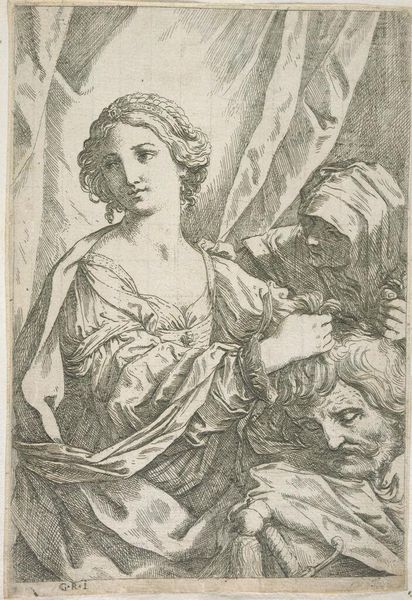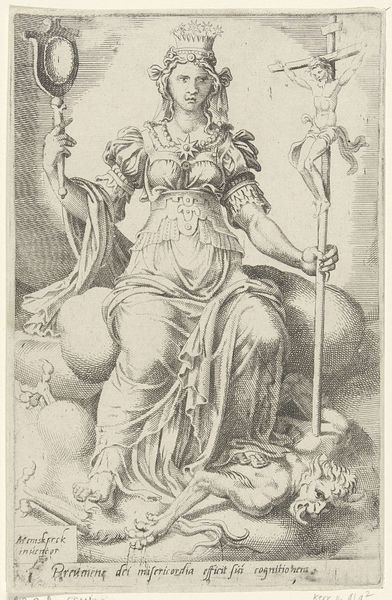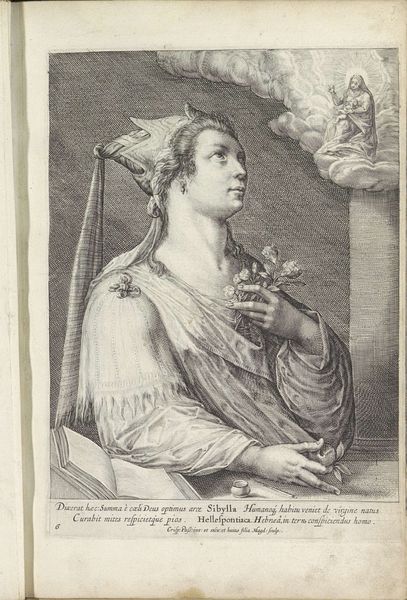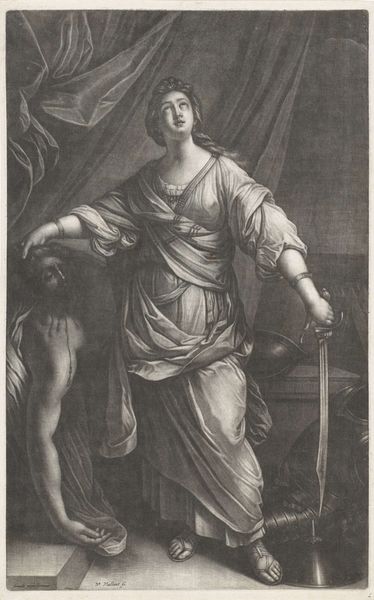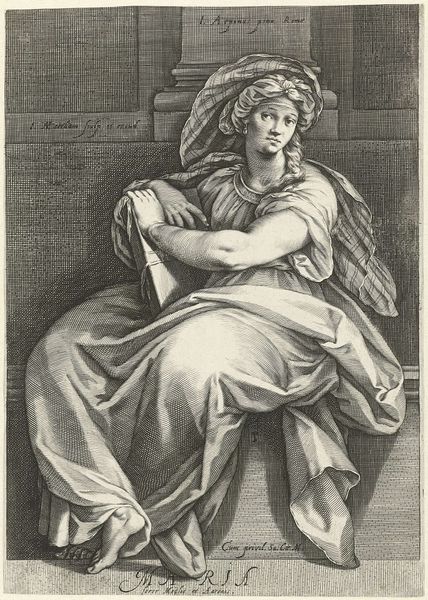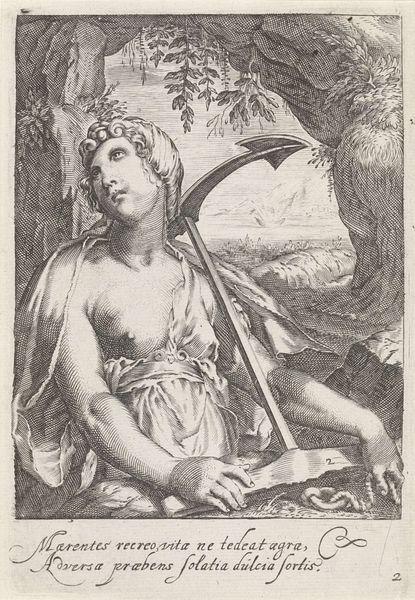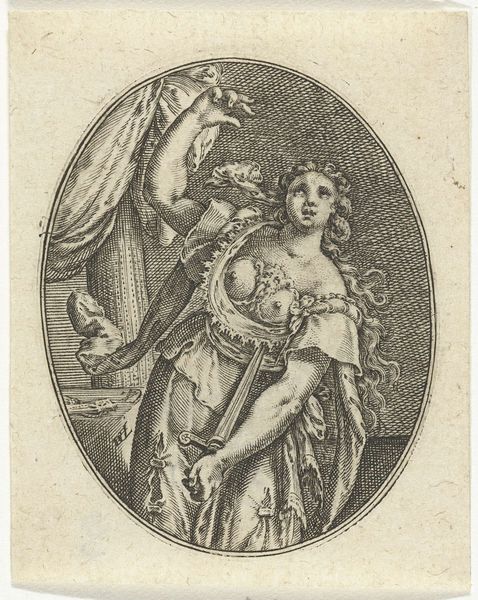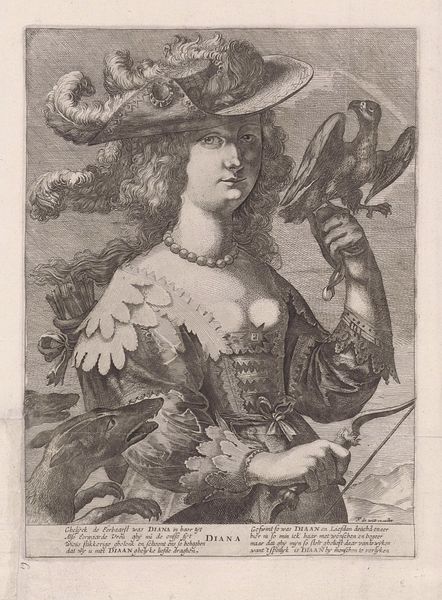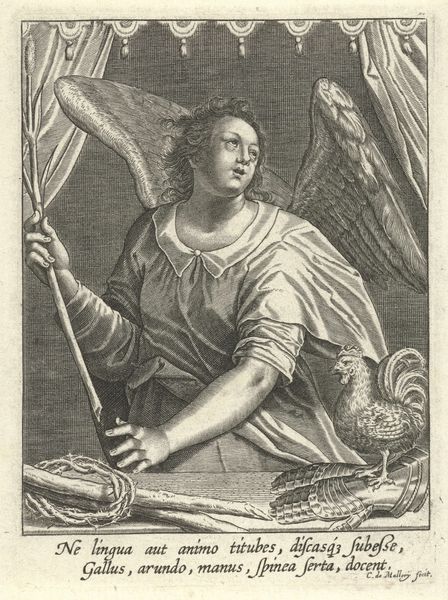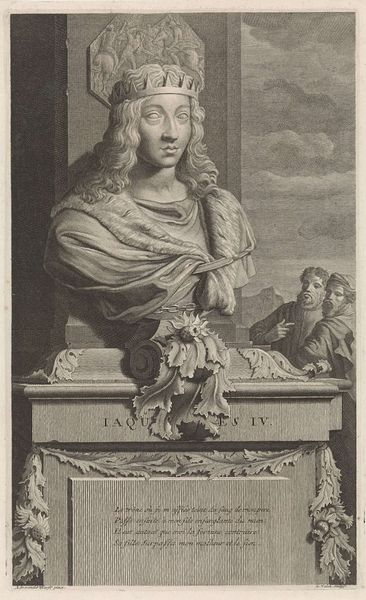
print, engraving
#
portrait
#
baroque
# print
#
old engraving style
#
figuration
#
line
#
portrait drawing
#
history-painting
#
northern-renaissance
#
engraving
Dimensions: height 267 mm, width 190 mm
Copyright: Rijks Museum: Open Domain
Editor: So this is "Sibille Agrippina", an engraving from 1615 by Crispijn van de Passe the Younger, currently housed in the Rijksmuseum. There’s something both classical and slightly unsettling about the figure, and that stark contrast really draws me in. What can you tell me about it? Curator: That contrast is key. The figure is presented as both powerful and vulnerable. She embodies a prophetic tradition but is positioned within a patriarchal Christian narrative. Note the gaze upwards, the banner, but also the figure in the clouds – likely a depiction of Christ, who embodies power that the Sibyl lacks. Editor: Ah, interesting! So, is she sort of a pre-Christian prophet whose importance is diminished because of her gender? Curator: Exactly. She's framed as a precursor, a tool to validate Christian narratives. And that positioning says so much about how knowledge and power were constructed in that period. Consider the male gaze – her sensuality is on display, yet supposedly subservient to her spiritual purpose. Editor: The feathers of her right shoulder look a little too like military defense. Are those an intentional suggestion of war and military aggression? Curator: Very astute observation! These sibyls were often deployed in allegories regarding state and national pride. They became symbols onto which nascent European nation states could project power, legitimacy and claims of a divinely sanctioned trajectory. Does the overt presence of text here – with its almost scientific approach – influence our perspective in any way? Editor: Absolutely. The Latin text lends an air of authority, but it also confines her within a specific interpretation. It almost feels like a deliberate attempt to control the narrative. Thank you. Curator: It is in that control that we are able to interpret the artwork from new vantage points. Thanks!
Comments
No comments
Be the first to comment and join the conversation on the ultimate creative platform.
